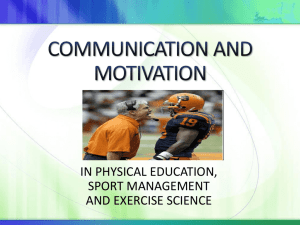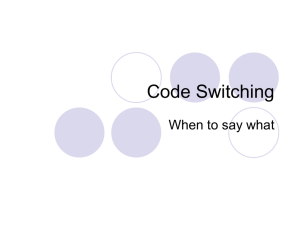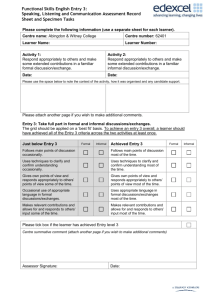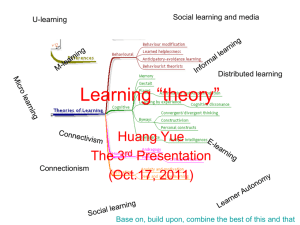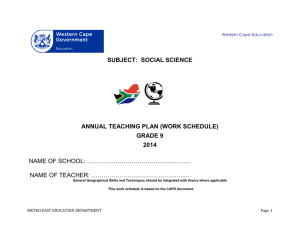CLB 6 information
advertisement
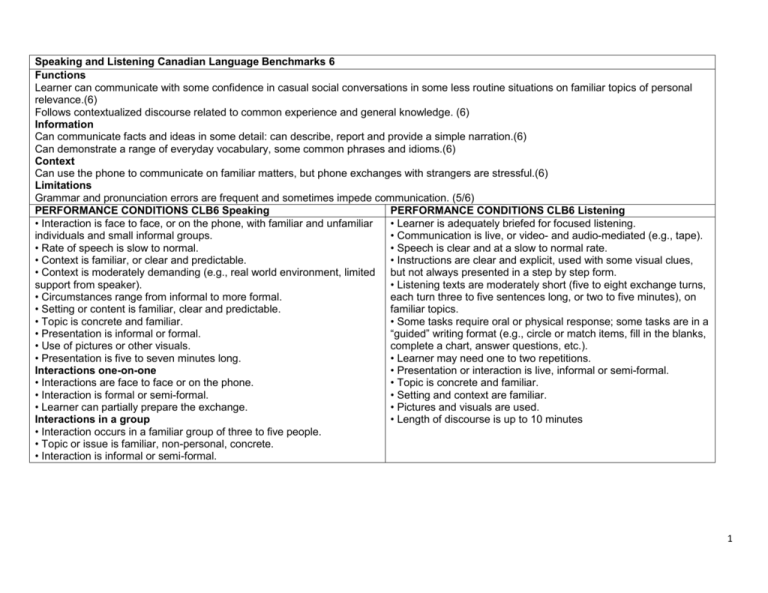
Speaking and Listening Canadian Language Benchmarks 6 Functions Learner can communicate with some confidence in casual social conversations in some less routine situations on familiar topics of personal relevance.(6) Follows contextualized discourse related to common experience and general knowledge. (6) Information Can communicate facts and ideas in some detail: can describe, report and provide a simple narration.(6) Can demonstrate a range of everyday vocabulary, some common phrases and idioms.(6) Context Can use the phone to communicate on familiar matters, but phone exchanges with strangers are stressful.(6) Limitations Grammar and pronunciation errors are frequent and sometimes impede communication. (5/6) PERFORMANCE CONDITIONS CLB6 Speaking PERFORMANCE CONDITIONS CLB6 Listening • Interaction is face to face, or on the phone, with familiar and unfamiliar • Learner is adequately briefed for focused listening. individuals and small informal groups. • Communication is live, or video- and audio-mediated (e.g., tape). • Rate of speech is slow to normal. • Speech is clear and at a slow to normal rate. • Context is familiar, or clear and predictable. • Instructions are clear and explicit, used with some visual clues, • Context is moderately demanding (e.g., real world environment, limited but not always presented in a step by step form. support from speaker). • Listening texts are moderately short (five to eight exchange turns, • Circumstances range from informal to more formal. each turn three to five sentences long, or two to five minutes), on • Setting or content is familiar, clear and predictable. familiar topics. • Topic is concrete and familiar. • Some tasks require oral or physical response; some tasks are in a • Presentation is informal or formal. “guided” writing format (e.g., circle or match items, fill in the blanks, • Use of pictures or other visuals. complete a chart, answer questions, etc.). • Presentation is five to seven minutes long. • Learner may need one to two repetitions. Interactions one-on-one • Presentation or interaction is live, informal or semi-formal. • Interactions are face to face or on the phone. • Topic is concrete and familiar. • Interaction is formal or semi-formal. • Setting and context are familiar. • Learner can partially prepare the exchange. • Pictures and visuals are used. Interactions in a group • Length of discourse is up to 10 minutes • Interaction occurs in a familiar group of three to five people. • Topic or issue is familiar, non-personal, concrete. • Interaction is informal or semi-formal. 1

